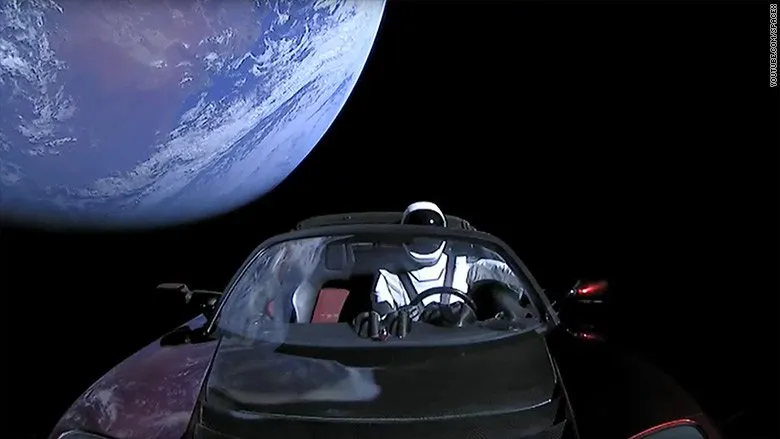SpaceX Just Took Us to a Tipping Point
Reflections on yesterday’s Falcon Heavy launch from a space veteran.
/https://tf-cmsv2-smithsonianmag-media.s3.amazonaws.com/filer/a7/9f/a79fc095-31f6-4a3f-8d20-28f9110b19a0/falcon_heavy_first_launch.jpg)
It was the most anticipated event on Florida’s Space Coast since the last shuttle launch in 2011.
SpaceX—you really cannot call them a startup any longer, since they have successfully launched four dozen Falcon 9s—was ready to debut their largest rocket to date, the Falcon Heavy. People flocked to central Florida to watch the launch, with some local estimates indicating that more than 100,000 people crowded the causeways and beaches. They were not disappointed. It was a perfect Florida winter day, with most locals and visitors in shorts and t-shirts.
Essentially three Falcon 9s strapped together, the Heavy generates a bit more than 5 million pounds of thrust, larger than any American rocket excepting the Saturn V (7.5 million) and space shuttle (a little more than 7 million). And both of those NASA vehicles are long since retired.
I spent most of my life working on the shuttle, and was there for the first and last launches. Most of my friends have had similar careers, and many of them are currently working on the NASA Space Launch System (SLS). It gives one an interesting perspective.
Perhaps even more so than the 100,000 people in attendance yesterday, the space veterans waited in anticipation. Just before launch, one of my friends at the Kennedy Space Center texted me “so excited,” a feeling shared by most. Although I elected to watch the launch from the beach rather than KSC, I am pretty sure little real work was accomplished for the half-hour it took SpaceX to launch and recover their first Falcon Heavy. All eyes were on Launch Complex 39A, the same pad used for 12 Saturn Vs and 82 shuttles, including Apollo 11 and STS-1.
Upper level winds delayed the launch by two hours, and people on the beach grew restless, as they always do during delays. The veterans understood the caution. Near the end of the launch window, the Falcon Heavy came off the pad, carrying one of Elon Musk’s original Tesla roadsters on a journey past Mars. Everybody watched the climb-out until the vehicle grew too small to see, then began waiting for the return. SpaceX intended to recover two of the boosters at their landing site on Cape Canaveral Air Force Station, while the center booster, which was traveling faster, would be brought down on a drone barge called “Of course, I still love you.” (The center core ended up missing the ship by about 100 meters, and slammed into the water at 500 kilometers per hour, fast enough to “shower the deck with shrapnel,” Musk reported later.)
That was about the only mishap, however. It was a fascinating show watching the two boosters fly in formation back to land. Their engines fired for a while, then went silent, only to start up again just before landing. One booster stirred up a large cloud of dust as it touched down; the other less so. As the dust settled, a pair of double-sonic booms shook the Space Coast, taking many by surprise since they assumed the show was over when the vehicles landed.

It leaves one marveling. The paradigm is shifting. Space was once the exclusive domain of governments. Now, at least in the United States, it is increasingly dependent on private companies. The Falcon Heavy competes almost directly with the initial Block 1 variant of NASA’s Space Launch System, with both being capable of lifting about 150,000 pounds to low-earth orbit. The difference is that SpaceX spent a fraction of the development money that NASA has invested in SLS and is marketing the Falcon Heavy for significantly less than an SLS launch. (Musk guesses that SpaceX spent about $500 million developing the Heavy, while the SLS will cost about 20 times that).
There are obvious differences between the two rockets. SLS will be human-rated, meaning that, at least in theory, it will be more reliable. But SpaceX is already working on its even larger Big Falcon Rocket (BFR) to carry people.
Falcon 9, which is largely the same hardware used by Falcon Heavy, has demonstrated 47 successes in 49 attempts, a 96 percent reliability rate. SLS has not flown, so it is difficult to assess its real reliability, but the space shuttle managed 98.5 percent, so that is probably a good guideline. Later SLS variants will significantly increase the payload, but at a substantial cost.
Most modes of transportation have gone through an evolution of being operated or supported by the government before private industry could figure out how to make money at it. Perhaps space has arrived at that tipping point.
Dennis R. Jenkins spent more than 30 years as an engineer on the space shuttle, and was the project manager who delivered the retired orbiters to their display sites. He is currently the project director for the Endeavour exhibit at the Samuel Oschin Air and Space Center at the California Science Center in Los Angeles.